Disclosure: This article contains affiliate links. We may earn a commission from purchases at no extra cost to you, which helps our travel content.
There's something deeply transformative about traversing multiple ecosystems in a single journey. As someone who's spent decades chasing sporting events across continents, I've developed a particular appreciation for how landscapes shape both athletic traditions and cultural identities. This past winter, with my children busy at university and my ex-wife leading a conservation project in the Galápagos, I embarked on what I now consider my most ambitious solo expedition yet: a month-long odyssey from the snow-draped peaks of Whistler, British Columbia to the surreal sand dunes of Huacachina, Peru. The journey wasn't merely about geographical contrast—it was about understanding how humans adapt to and celebrate these wildly different environments, from alpine sports culture to desert adventures that have evolved over centuries. Join me as I recount this 10,000-kilometer voyage across hemispheres and seasons, temperatures and terrains.
Whistler: More Than Just a World-Class Ski Resort
My journey began in Whistler, where I'd previously covered the 2010 Winter Olympics but never truly immersed myself in the local culture. This time was different. I arrived in early February, timing my visit with optimal snow conditions but just after the holiday crowds had dispersed.
While Whistler's reputation as North America's premier ski destination is well-earned, what struck me was the profound ecological awareness that permeates the resort community. My first morning, I joined a guided snowshoe tour through ancient cedar forests with a First Nations guide who shared the Squamish people's historical connection to these mountains. The juxtaposition of ultra-modern ski infrastructure against this millennia-old cultural backdrop created a fascinating tension that defines Whistler's identity.
On the slopes, I rediscovered my skiing legs with surprising ease. The diversity of terrain across Whistler and Blackcomb mountains means that even after five consecutive days, I was still discovering new runs and perspectives. For capturing these moments, my weatherproof action camera proved invaluable—its stabilization features made even my most ambitious descents look professional, while the cold-weather battery performance meant I never missed those perfect alpine panoramas.
Beyond the mainstream resort experience, I discovered Whistler's overlooked cross-country skiing network at Lost Lake. Here, the crowds thin dramatically, and you can glide through snow-hushed forests in near solitude, occasionally crossing paths with locals who've made this daily ritual part of their mountain lifestyle. One evening, I joined a twilight ski tour that culminated in a traditional Canadian sugar shack experience—maple syrup drizzled over fresh snow to create nature's perfect candy.
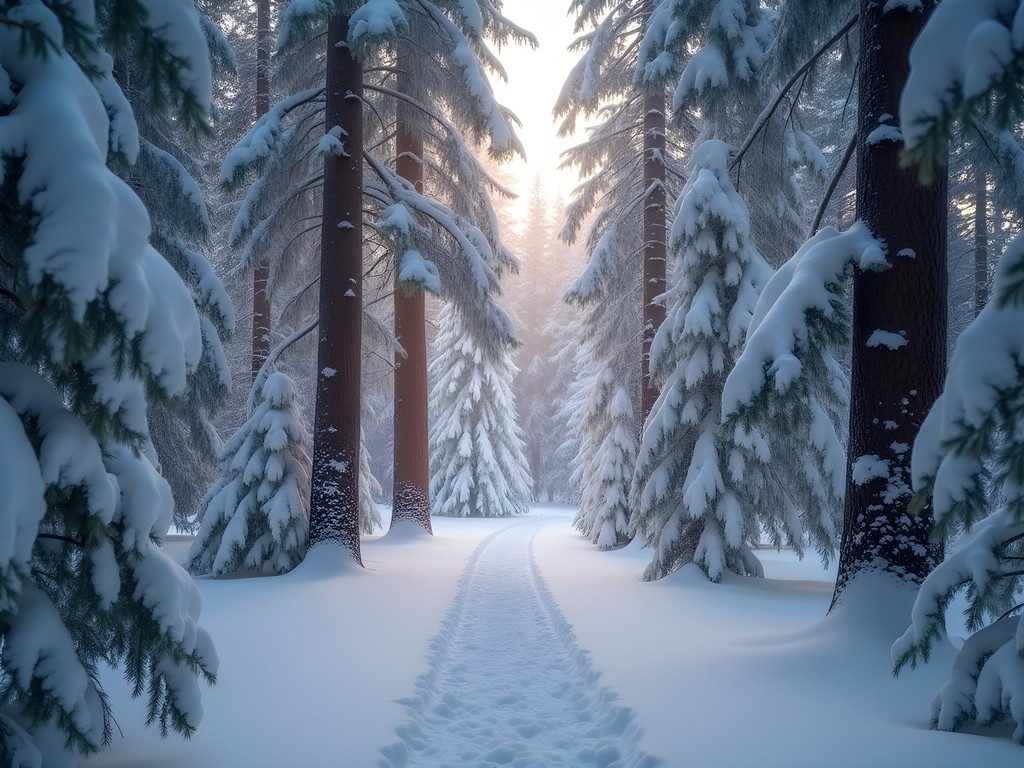
💡 Pro Tips
- Book accommodations in Whistler Village North for better value and quieter evenings while maintaining gondola access
- The Peak 2 Peak Gondola is worth experiencing even for non-skiers—go mid-week for fewer crowds
- Whistler's public library offers excellent free Wi-Fi and workspace with mountain views when you need a day off the slopes
The Pacific Northwest Interlude: Olympic National Park
Transitioning from Whistler meant driving south through British Columbia's Coast Mountains before crossing into Washington State. Rather than rushing straight to Seattle's airport, I carved out three days to explore Olympic National Park—a UNESCO World Heritage site that offers an astonishing concentration of ecosystems within its boundaries.
My first stop was the Hoh Rain Forest, one of the largest temperate rainforests in the United States. Walking beneath moss-draped maples and towering Sitka spruces in February meant having the trails nearly to myself. The persistent drizzle that keeps this ecosystem lush actually enhanced the experience, intensifying the emerald colors and earthy scents. My waterproof hiking boots proved their worth here, keeping my feet dry through countless puddles and stream crossings.
What makes Olympic truly remarkable is how quickly the landscape transforms. From rainforest, I drove just 60 miles to Hurricane Ridge, where subalpine meadows (now blanketed in snow) offered panoramic views of the park's interior mountains. The contrast between these environments, existing in such close proximity, reminded me of New Zealand's similarly compressed ecological diversity.
My final day brought me to the rugged Pacific coastline at Ruby Beach, where massive driftwood logs and sea stacks create one of North America's most distinctive shorelines. As a sports journalist who's increasingly focused on how geography shapes athletic culture, I was fascinated to watch local surfers tackling the frigid February waves in thick wetsuits—a testament to how humans adapt recreational pursuits to even the most challenging environments.
This Pacific Northwest segment served as the perfect transitional chapter between Whistler's alpine world and the tropical environments awaiting me further south. It also reinforced my growing conviction that understanding a region's natural features is essential to appreciating its cultural identity.

💡 Pro Tips
- The park's diverse ecosystems mean weather conditions can vary dramatically—pack accordingly and check road conditions
- Lake Crescent Lodge offers historic accommodation within the park boundaries, even in winter months when many facilities close
- February visits mean solitude but require flexibility as some high-elevation roads may close with little notice
Costa Rica: Cloudforests and Conservation
After a brief stopover in Seattle, I boarded a flight to San José, Costa Rica—the first major geographical leap in my journey from north to south. Within hours, I had exchanged winter layers for lightweight clothing as I headed toward Monteverde, home to one of the world's most celebrated cloud forests.
My connection to Costa Rica runs deep. Twenty years ago, I covered an international cricket exhibition here—an oddity in a football-dominated nation—and became fascinated by how sport was being used to promote conservation awareness. Returning now, I was heartened to see ecotourism had matured rather than commercialized.
In Monteverde, I stayed at a small ecolodge run by a former national park ranger whose passion for sustainable tourism was infectious. The property's gardens attracted more bird species than I could identify, though I certainly tried with my compact binoculars that have accompanied me to cricket grounds and wilderness areas alike for over a decade.
The cloud forest itself defies adequate description. Walking through this misty realm where trees drip with orchids and bromeliads, where resplendent quetzals occasionally flash their emerald feathers, is to experience nature at its most mystical. The network of hanging bridges throughout the reserve offers perspective from within and above the canopy—a three-dimensional experience of forest ecology that few other destinations can match.
What impressed me most was how the Monteverde community has balanced conservation with livelihood. Many locals who once might have turned to logging or agriculture now work as naturalist guides, their intimate knowledge of the ecosystem providing visitors with insights no guidebook could offer. One such guide, Carlos, pointed out a tiny glass frog no larger than my thumbnail—its translucent skin revealing its beating heart and internal organs, a reminder of nature's extraordinary design and vulnerability.
During my four days here, I also visited a sustainable coffee plantation, where I gained new appreciation for how traditional cultivation methods can preserve habitat corridors for wildlife while producing superior beans. The connection between conservation, culture, and commerce was evident in every aspect of life here—a model I wish more destinations would embrace.

💡 Pro Tips
- Book guided night walks in advance—they reveal a completely different forest ecosystem when nocturnal creatures emerge
- The green season (May-November) means fewer tourists but daily afternoon rain—schedule important activities for mornings
- Many Monteverde accommodations lack heating despite cool evenings at elevation—pack a light fleece even in this tropical destination
Peru's Sacred Valley: Altitude and Ancient Wisdom
The journey from Costa Rica's humid lowlands to Peru's Sacred Valley represented the most dramatic ecological transition of my trip. Landing in Cusco at 11,000 feet above sea level, I immediately felt the thin air that has shaped Andean culture for millennia.
Rather than rushing to Machu Picchu like most visitors, I dedicated a week to the Sacred Valley's less-celebrated communities. In Chinchero, I stayed with a family of traditional weavers whose textiles incorporate symbols and techniques dating back to Inca times. The grandmother, noticing my interest in how local geography influences cultural practices, showed me how different natural dyes are sourced from plants growing at specific altitudes—knowledge passed through generations that connects craft directly to landscape.
During my time in the Sacred Valley, I participated in a traditional pachamanca feast, where food is cooked underground using heated stones—a method developed centuries ago to conserve scarce fuel at high elevations. These practical adaptations to environmental constraints reveal how deeply culture is shaped by place.
Of course, I eventually made the pilgrimage to Machu Picchu, timing my visit for late afternoon when most day-trippers had departed. The site's magnificence has been well-documented, but what struck me was how the Inca engineers had worked with rather than against the mountain's natural contours—a lesson in sustainability that modern developers would do well to heed.
For capturing the breathtaking landscapes of the Sacred Valley, my mirrorless camera proved invaluable. Its excellent dynamic range handled the challenging high-altitude light conditions, while its relatively compact size meant I could carry it on even strenuous hikes without feeling burdened.
The most meaningful experience came through a chance encounter with a local guide who, upon learning of my interest in traditional sports, invited me to witness a training session of Andean runners. These athletes, descendants of chasquis (Inca messengers), train at altitudes that would leave most Olympic competitors gasping. Their specialized techniques for high-altitude endurance—developed over centuries—demonstrate how indigenous knowledge often precedes scientific understanding of human physiology.

💡 Pro Tips
- Acclimatize to altitude gradually by spending two nights in Cusco before descending to the slightly lower Sacred Valley
- Most tourists visit Machu Picchu as a day trip, but staying overnight in Aguas Calientes allows for early morning or late afternoon visits when crowds thin dramatically
- Local markets rotate between different towns on specific days of the week—ask your accommodation for the schedule to experience authentic commerce rather than tourist-oriented craft markets
Huacachina: Desert Oasis and Journey's End
My month-long journey culminated in perhaps Peru's most surreal landscape: Huacachina, a natural desert oasis surrounded by towering sand dunes that stretch as far as the eye can see. After weeks of forests, mountains, and valleys, the stark minimalism of the desert provided a fitting finale—a landscape reduced to its essential elements of sand, sky, and the precious water at its center.
Huacachina itself is a small settlement built around a natural lake, its palm trees creating an almost clichéd oasis image that somehow remains genuinely magical when experienced in person. The contrast between the lush greenery immediately surrounding the lake and the immense golden dunes beyond creates a boundary between worlds that feels almost mythological.
My first evening, I hiked to the top of the tallest accessible dune to watch sunset transform the landscape. The desert's ability to change character completely as light shifts throughout the day reminded me of cricket grounds I've covered around the world—how the same physical space can feel entirely different depending on the angle and quality of light.
The following day, I embraced Huacachina's signature activity: sandboarding. Having spent the first part of my journey snowboarding in Whistler, the symmetry was irresistible. The techniques share similarities, though sand offers less control and more resistance than snow. Local guides take visitors up the dunes in dune buggies—exhilarating rides that feel like roller coasters without tracks—before providing boards for the descent.
My final morning, I rose before dawn to experience the desert in its most contemplative state. Walking barefoot across cool sand that would become scorching within hours, I reflected on the journey's progression—from the snow-draped conifers of British Columbia to this austere landscape of wind-sculpted sand. My travel journal was nearly full, its pages documenting not just locations but the gradual shift in my perspective as each environment revealed its distinct character and cultural context.
What struck me most about Huacachina was how this seemingly inhospitable environment has spawned its own recreational culture. Just as Whistler's mountains created a ski culture, these dunes have generated their own adventure sports community—proof that humans will find ways to play in and celebrate even the most challenging landscapes.

💡 Pro Tips
- Book sandboarding/dune buggy tours for late afternoon when temperatures cool and the light creates dramatic shadows across the dunes
- Most visitors come as day-trippers from nearby Ica—staying overnight in Huacachina allows you to experience the desert at its most magical during sunrise and sunset
- The small oasis can feel crowded midday—early mornings offer solitude and better photography opportunities
Final Thoughts
As my journey from Whistler's snow-capped peaks to Huacachina's golden dunes drew to a close, I found myself reflecting on how landscapes shape not just recreational activities but entire cultural identities. Throughout this month-long odyssey across hemispheres and ecosystems, I witnessed the remarkable adaptability of human communities to their environments—whether developing specialized weaving techniques at high altitudes or creating adventure sports in seemingly inhospitable deserts.
For the solo traveler willing to embrace this north-to-south trajectory, the rewards extend beyond mere sightseeing. The gradual transition between ecosystems—alpine to temperate rainforest, cloud forest to high Andes, and finally to desert—offers a unique perspective on our planet's diversity that no single destination can provide. More importantly, it reveals the ingenious ways communities have adapted to these environments over centuries.
Whether you follow my exact route or create your own ecological journey, I encourage you to look beyond the obvious attractions to the connections between landscape and culture. In doing so, you'll discover that the most meaningful souvenirs aren't photographs or mementos, but the deeper understanding of how place shapes people—and how we, as travelers, are shaped by the places we visit.
✨ Key Takeaways
- Multi-ecosystem journeys provide unique perspectives on environmental and cultural diversity
- Traveling through contrasting landscapes heightens appreciation for human adaptability
- Solo travel allows for deeper cultural immersion and unexpected local connections
- Shoulder seasons offer the perfect balance of good conditions and fewer crowds
- The most meaningful travel experiences often come from understanding the relationship between landscape and culture
📋 Practical Information
Best Time to Visit
February-March for optimal conditions across all destinations
Budget Estimate
$4,500-6,000 USD for one month (excluding international flights)
Recommended Duration
28-32 days
Difficulty Level
Challenging
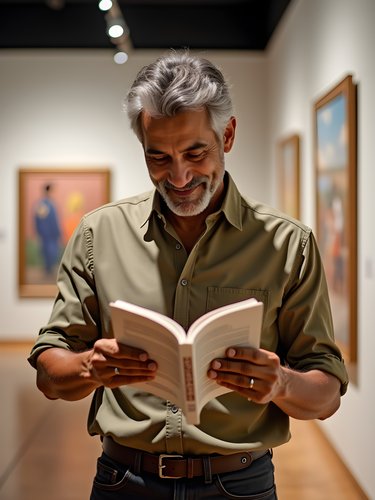
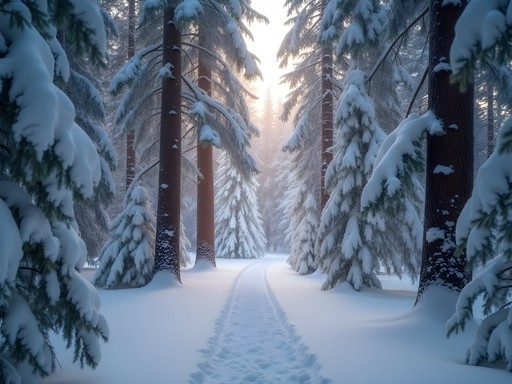

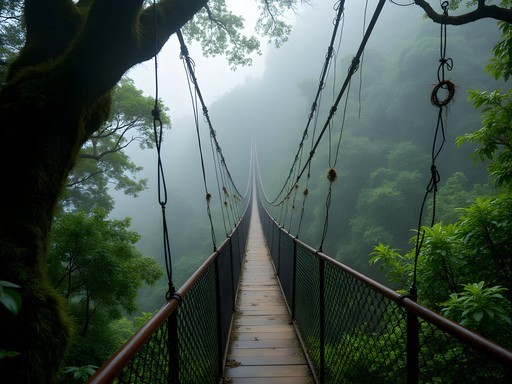
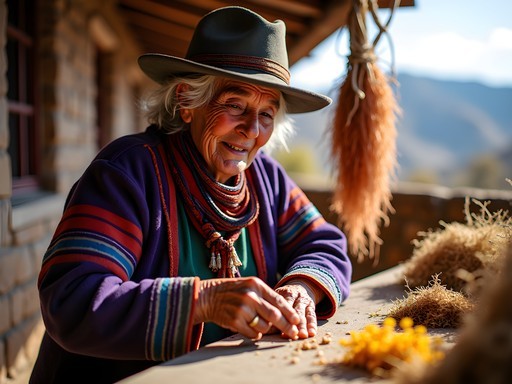



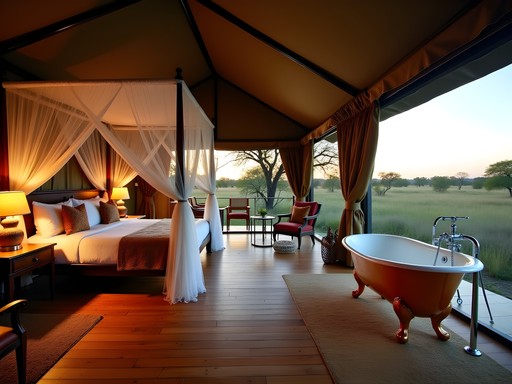







Comments
Megan Martin
Amit, this is exactly the kind of cross-ecosystem journey I'm planning for my sabbatical next year! Your section on the Pacific Northwest to Costa Rica transition particularly resonated with me. I'm curious about the logistics between Peru's Sacred Valley and Huacachina - did you go through Lima or is there a more direct route? Also, did you find the contrast between the cloudforests and desert dunes as profound as it seems in your photos? Beautiful narrative throughout!
Amit Sullivan
Thanks Megan! For Sacred Valley to Huacachina, I took a flight from Cusco to Lima, then a bus to Ica (about 4 hours), and a short taxi to Huacachina. There are direct buses from Cusco but they're 18+ hours. And yes, the ecosystem contrast was mind-blowing - went from lush green moisture everywhere to absolute desert in the span of a day. Happy to share more specific logistics if you're planning something similar!
Megan Martin
That's super helpful, thanks! I'll definitely opt for the flight to Lima route then. Would love to connect offline about more details as I get closer to planning!
starperson
Your journey is inspiring! I've done Whistler and Costa Rica separately but never thought about connecting these destinations. How did you handle the extreme gear needs? I always struggle with packing for multi-climate trips. I used my packing cubes for my last trip which helped organize things, but still ended up with way too much stuff.
Amit Sullivan
Thanks! Gear was definitely a challenge. I actually shipped a box of cold-weather gear home after Whistler and picked up some lightweight items in Costa Rica. Having a good base layer system that works across climates saved me a lot of space!
globepro
I did a similar route last year but missed Olympic National Park - huge regret now after reading your description of those temperate rainforests! The transition from Costa Rica's humidity to Peru's dry mountain air was jarring for me. Did you find the Huacachina dunes worth the side trip? I skipped them and headed straight to Lima after Cusco.
Amit Sullivan
Olympic NP is definitely worth circling back for someday! And yes, Huacachina was actually one of my highlights - sandboarding down those massive dunes at sunset was unforgettable. Plus the contrast of the oasis in the middle of the desert makes for incredible photos. It's only a few hours from Lima, so easy to add on!
starperson
I second this! Huacachina was amazing. If you go, definitely try the dune buggy rides - terrifying but so much fun. Just bring a good scarf for all the sand!
coffeeblogger
The altitude changes sound intense! Did you have any trouble adjusting when you got to Peru's Sacred Valley?
Amit Sullivan
Definitely felt it the first day in Cusco! I took it really slow, drank coca tea, and stayed hydrated. By day three I was good to go for hiking.
escapeway
Wow, what a journey! How long did it take you to complete the entire trip from Whistler to Huacachina? Was it one continuous journey or did you break it up?
Amit Sullivan
Thanks for asking! It was about 7 weeks total, but I broke it into segments with about a week at home between the Pacific Northwest and Costa Rica. Made it more manageable logistically and gave me time to adjust gear for different climates.
escapeway
That makes sense! I've always struggled with packing for multi-climate trips. 7 weeks sounds perfect though - not too rushed.
Hunter Thompson
Mate, your journey is EPIC! I did a similar route last year but added Colombia between Costa Rica and Peru. The altitude change in Sacred Valley is no joke - took me 3 days in Cusco just to stop feeling like my head would explode! Did you have any altitude issues? For anyone heading to Peru, I found that altitude sickness pills helped tremendously, though the local coca tea works wonders too. Your description of sandboarding in Huacachina brought back wild memories - I faceplanted so many times but worth every bruise! Did you stay in that hostel with the pool overlooking the oasis?
Amit Sullivan
Thanks Hunter! Colombia would've been amazing to include! I actually had a rough first day with altitude in Cusco - headache city. And yes! That exact hostel with the pool view - Banana's Adventure Hostel. Those sunset views were unreal.
bluequeen4347
I've heard so much about that coca tea for altitude! Does it really work?
Hunter Thompson
It absolutely does! Just don't bring it home - customs won't be happy! 😂
stardiver3135
How did you handle packing for such different climates? I'm planning something similar next year and wondering about logistics.
Amit Sullivan
Great question! I used a compression packing system and shipped some winter gear home from Costa Rica. Layers are key! Also had to be strategic about footwear - just 3 pairs for all terrains.
stardiver3135
Thanks for the tips! Never thought about shipping gear home midway - that's smart.
bluequeen4347
Wow, what a journey! Going from snowy mountains to sand dunes in one trip is definitely on my bucket list now!
Amit Sullivan
Thanks! It was quite the climate shock but absolutely worth experiencing both extremes!
Gregory Boyd
Having traversed similar terrain myself, I appreciate the nuanced way you've captured the ecological transitions, Amit. The psychological effect of moving from Whistler's alpine environment to Peru's high desert landscapes is profound and often overlooked in travel writing. I spent three weeks analyzing the microclimates between these regions last year for my own research. One observation: the biodiversity corridor from Olympic National Park to Monteverde represents one of the most dramatic ecological gradients on the planet. Did you notice any specific adaptations in your own travel habits or gear requirements moving between these zones? For Peru's altitude, I found systematic acclimatization was key - 2 days in Arequipa (2,300m) before Cusco made all the difference.
bluediver
That Arequipa tip is gold! I went straight to Cusco last time and was miserable for days. Definitely stopping in Arequipa next time.
mountainace
I did the Sacred Valley last summer and can confirm the altitude is no joke. Taking it slow in Ollantaytambo before heading to higher elevations saved my trip. Did you try the coca tea, Amit? It really helped me adjust.
Venture X
Premium card with 2X miles, $300 travel credit, Priority Pass